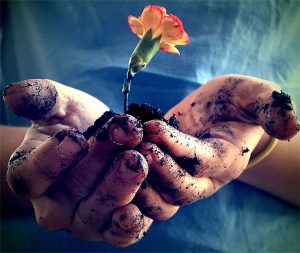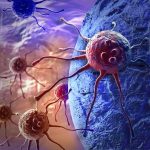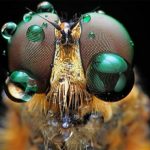Life (жизнь) (hereinafter referred to as “L.”) is the highest compared to the physical and chemical form of existence of matter, arises under certain conditions in the process of its development. Living objects differ from nonliving metabolism — a prerequisite L., ability to reproduction, growth, active regulation of its composition and functions, to various forms of movement, irritability, adaptability to environment, etc.
However, strictly scientific differentiation of living and nonliving meets certain difficulties items. So, there is still no consensus about whether human viruses that are outside cells of the host organism does not possess any of the attributes of the living: in the virus particle at this time there are no metabolic processes, it is not able to reproduce, etc.
The specificity of living things and life processes can be described as aspect of their financial structure and key features, underlying all manifestations of L. the Most accurate definition of life, embracing simultaneously both of these approaches to the problem, given about 100 years ago, the German philosopher, thinker and public figure, founder of Marxism Friedrich Engels: “Life is the mode of existence of protein bodies, and this method of existence consists essentially in a constant renewal of the chemical component parts of these bodies” (K. Marx and F. Engels, Soch., 2nd ed., vol. 20, p. 82). The term “protein” had not yet been determined quite accurately and it is usually attributed to the protoplasm as a whole.
All objects now known that possess the indisputable attributes of the living, are composed of two main types of biopolymers: proteins and nucleic acids (DNA and RNA). Conscious of the incompleteness of his definition, Engels wrote: “Our definition of life, of course, very insufficient, because it is far from being able to embrace all the phenomena of life, but rather is limited to the most common and simplest among them… to get a really comprehensive view of life, we would have to trace all the forms of its manifestation, from the lowest to the highest” (ibid., p.84).
English scientist, naturalist, traveler, Creator of Darwinism, foreign corresponding member Petersburg Academy of Sciences Charles Darwin in the last lines of the “Origin of species” writes about the basic laws which, in his opinion, the basis of the occurrence of all forms L.: “These laws, in the broadest sense of Growth and Reproduction, Heredity, almost must be derived from the playback Variability that depend on direct or indirect action of conditions of life and from exercises and neupaney, the Progression of reproduction is so high that it leads to a Struggle for life and its consequence Natural Selection…” (Soch., vol. 3, Moscow — Leningrad, 1939, p. 666). If we leave aside the role of exercise, which, according to later reports, is factor non-hereditary variability, a synthesis of Darwin remains in force today, and his basic laws of life are reduced to two even more General. It is primarily the ability of the living to assimilate received from outside the substance, i.e. to be transformed into the likeness of their own financial structures, and due to this many times to play them (to reproduce). In this case, if the initial structure is randomly changed (mutation), it continues in a new form.
Ability to excessive self-reference underlies cell growth, reproduction of cells and organisms and, hence, the progression of reproduction (the main condition for natural selection), as well as the basis of heredity and hereditary variability. Soviet biochemist V. Engelhardt Engelhardt was considered the reproduction of their kind as a fundamental property of the living, which now receives the interpretation in terms of chemical concepts on a truly molecular level. The other feature of live is the huge variety of properties acquired due to the variability of the material structures of living objects. Each of these two fundamental properties is mainly connected with the function of one of the two biopolymers. The “record” of hereditary properties, i.e., the encoding of characteristics of the organism, necessary for the reproduction, by using DNA and RNA, although in the process of reproduction necessarily involved proteins enzymes. Thus, living is not a single molecule of DNA, protein or RNA and their system in General.
Implementation of diverse information about the properties of the organism by synthesis according to the genetic code of various proteins (enzymatic, structural, etc.), which due to its diversity and structural plasticity contributes to the development of various physical and chemical adaptations of living organisms. On this Foundation, in the process of evolution has arisen unsurpassed in its perfection live control systems. Thus, life is characterized by a highly ordered material structures containing two kinds of biopolymers (protein and DNA or RNA) that make up a living system, capable as a whole to replicate itself on the principle of matrix synthesis. A characteristic feature of the chemical composition of the known forms L. — asymmetry of optically active substances, presented in live objects levorotatory or dextrorotatory forms.
Life is possible only under certain physical and chemical conditions (temperature, presence of water, some salts, etc.). However, the cessation of life processes, such as drying seeds, or deep freezing of small organisms, does not lead to loss of viability. If the structure remains intact, it is in the return to normal conditions ensures the restoration of vital processes.
Life qualitatively surpasses other forms of existence of matter in relation to the diversity and complexity of chemical components and the dynamics occurring in a living transformations. Living systems are characterized by a much higher order structural and functional, in space and in time. Structural compactness and energy efficiency of a living — the result of higher order at the molecular level. One important consequence of this compactness is a universal effect of the “gain”, characteristic of all living systems. As of 5∙10-15 g DNA contained in the fertilized egg of the whale, is contained information for the vast majority of signs of the animal, which weighs 5∙107 G. Here, therefore, if you have the necessary conditions, the weight increases by 22 fine. “It is the ability of the living to create order out of the chaotic thermal motion of molecules, — wrote Vladimir Aleksandrovich Engelgardt, is the most profound, fundamental difference between living from non-living. The tendency to organize, to create order out of chaos is nothing like countering the increase of entropy” (“Communist”, 1969, № 3, p. 85).
Living systems exchange with the environment energy, matter and information, i.e., they are open systems. In this case, unlike inanimate systems, and they does not correct the energy differences and the reorganization of the structures in the direction of more probable forms, and there is the opposite: restores the difference of energy potentials, chemical composition, etc., i.e. continuously going to work “against equilibrium” (Ervin Simonovich Bauer). This is based on the erroneous assertion that living systems allegedly do not obey the second law of thermodynamics. However, the local decrease in entropy in living systems is possible only by increasing entropy in the environment, so in General, the process of increasing entropy continues, which is consistent with the requirements of the second law of thermodynamics. In the figurative expression of the Austrian physicist Erwin Schrödinger, living organisms like to feed on negative entropy (negentropy), removing her from the environment and increasing the positive increase of entropy in it.
Life on Earth originated at least 1.5 — 2 billion years ago (see origin of life), presented with a huge number of organisms. Each organism can exist only under the condition of constant close contact with the environment, with other organisms and inanimate nature, and this relationship is bilateral. L. in all its manifestations has produced profound changes in the evolution of our planet, at least the outer shells. In perfecting the process of evolution, living organisms have been increasingly spread across the planet, taking an increasing part in the redistribution of energy and substances in the earth’s crust, and in air and water environments of the Earth.
The emergence and spread of vegetation has led to a radical change in the composition of the atmosphere originally contained very little free oxygen and consisting mainly of carbon dioxide and probably methane and ammonia. Plants assimilating carbon from CO2, has led to the creation of an atmosphere that contains free oxygen and only traces of CO2. Free oxygen in the atmosphere was not only active chemical agent, but also a source of ozone, block the path of the ultraviolet rays to the surface of the Earth (“ozone shield”). At the same time the carbon for centuries siplivaya in plant residues formed in the earth’s crust vast energy reserves in the form of deposits of organic compounds (coal, peat).
Vegetation cover changed the physical and chemical characteristics of the planet; changed, in particular, the reflectance of the land surface of various parts of the solar spectrum. The development of life in the oceans led to the creation of sedimentary rock composed of the skeletons and other remains of marine organisms. These deposits, their mechanical pressure, chemical and physical transformations changed the surface of the crust. Active selective absorption of substances by the organisms caused the redistribution of substances in the upper layers of the cortex. All this testifies to the presence on Earth of a special shell called the Soviet scientist, geochemist, Vladimir Ivanovich Vernadsky the biosphere, which was developed and continues to this day the phenomena of life.
In the course of evolution of living organisms is being continuously improved processes of regulation and their adaptation to external conditions, in freely moving animals has contributed to the development of the Central nervous system. Development is influenced by social labor the most advanced forms of higher nervous activity in human ancestors created the preconditions for life transition to a new social level associated with a new form of movement, human and qualitatively different from the biological, inherent in other forms of L., After the transition to this level, with the emergence of social consciousness, it becomes possible prediction of the development and creation of new forms of regulation and adaptations that are able to provide benefits that are impossible in the purely biological process of development. (Alexander A. Malinovsky, «Great Soviet Encyclopedia»)
Learn more about life read in the literature:
- F. Engels, Dialectics of nature, Marx Karl and F. Engels, Soch., 2nd ed., so Twenty;
- its the same Anti-dühring, ibid.;
- Lenin Vladimir Ilyich, Materialism and empiriocriticism, Full. Coll. soch., 5th ed., so Eighteen;
- In Vernadsky. I., the Biosphere, V. 1 — 2, l, 1926;
- Bauer E. S., Theoretical biology, Moscow — Leningrad, 1935;
- Schroedinger E., What is life from the point of view of physics?, translation from English., Moscow, 1947;
- Schmalhausen, Ivan Ivanovich, Cybernetic questions of biology, Novosibirsk, 1968;
- Malinovsky, A. A., Some questions of the organization of biological systems, in journal: Organization and management, Moscow, 1968;
- In Engelhardt., The problem of life in modern natural science, “Communist”, 1969, No. 3;
- L. fon bertalanfy. Problems of life, N. J., [I960].










